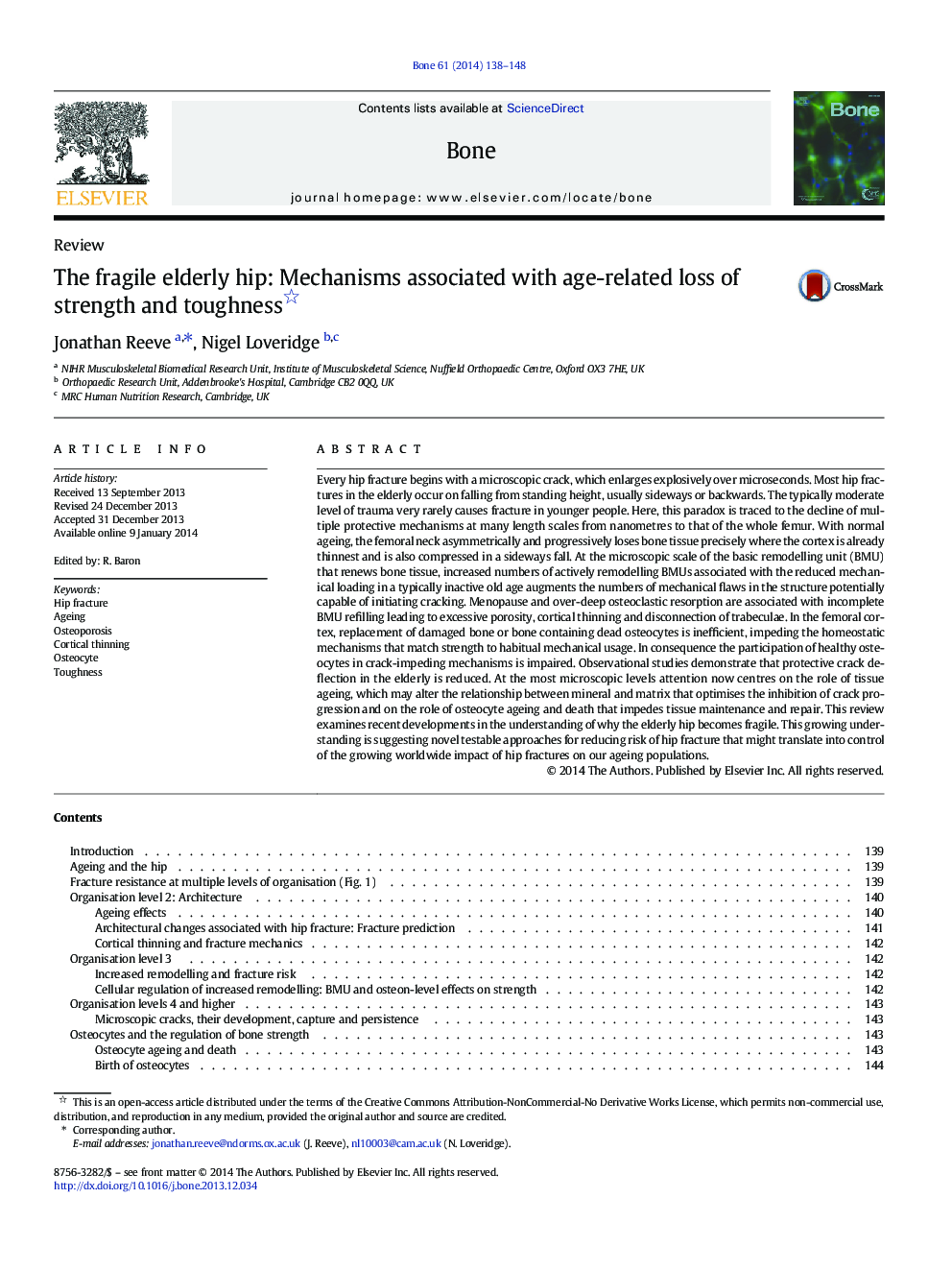| کد مقاله | کد نشریه | سال انتشار | مقاله انگلیسی | نسخه تمام متن |
|---|---|---|---|---|
| 5890239 | 1568158 | 2014 | 11 صفحه PDF | دانلود رایگان |
عنوان انگلیسی مقاله ISI
The fragile elderly hip: Mechanisms associated with age-related loss of strength and toughness
ترجمه فارسی عنوان
لگن سالخورده شکننده: مکانیسم های مربوط به از دست دادن قدرت از نظر سن و سختی
دانلود مقاله + سفارش ترجمه
دانلود مقاله ISI انگلیسی
رایگان برای ایرانیان
کلمات کلیدی
شکستگی لگن، سالخورده، پوکی استخوان، نازک شدن قشر، استئوسیت، سختی،
موضوعات مرتبط
علوم زیستی و بیوفناوری
بیوشیمی، ژنتیک و زیست شناسی مولکولی
زیست شناسی تکاملی
چکیده انگلیسی
Every hip fracture begins with a microscopic crack, which enlarges explosively over microseconds. Most hip fractures in the elderly occur on falling from standing height, usually sideways or backwards. The typically moderate level of trauma very rarely causes fracture in younger people. Here, this paradox is traced to the decline of multiple protective mechanisms at many length scales from nanometres to that of the whole femur. With normal ageing, the femoral neck asymmetrically and progressively loses bone tissue precisely where the cortex is already thinnest and is also compressed in a sideways fall. At the microscopic scale of the basic remodelling unit (BMU) that renews bone tissue, increased numbers of actively remodelling BMUs associated with the reduced mechanical loading in a typically inactive old age augments the numbers of mechanical flaws in the structure potentially capable of initiating cracking. Menopause and over-deep osteoclastic resorption are associated with incomplete BMU refilling leading to excessive porosity, cortical thinning and disconnection of trabeculae. In the femoral cortex, replacement of damaged bone or bone containing dead osteocytes is inefficient, impeding the homeostatic mechanisms that match strength to habitual mechanical usage. In consequence the participation of healthy osteocytes in crack-impeding mechanisms is impaired. Observational studies demonstrate that protective crack deflection in the elderly is reduced. At the most microscopic levels attention now centres on the role of tissue ageing, which may alter the relationship between mineral and matrix that optimises the inhibition of crack progression and on the role of osteocyte ageing and death that impedes tissue maintenance and repair. This review examines recent developments in the understanding of why the elderly hip becomes fragile. This growing understanding is suggesting novel testable approaches for reducing risk of hip fracture that might translate into control of the growing worldwide impact of hip fractures on our ageing populations.
ناشر
Database: Elsevier - ScienceDirect (ساینس دایرکت)
Journal: Bone - Volume 61, April 2014, Pages 138-148
Journal: Bone - Volume 61, April 2014, Pages 138-148
نویسندگان
Jonathan Reeve, Nigel Loveridge,
